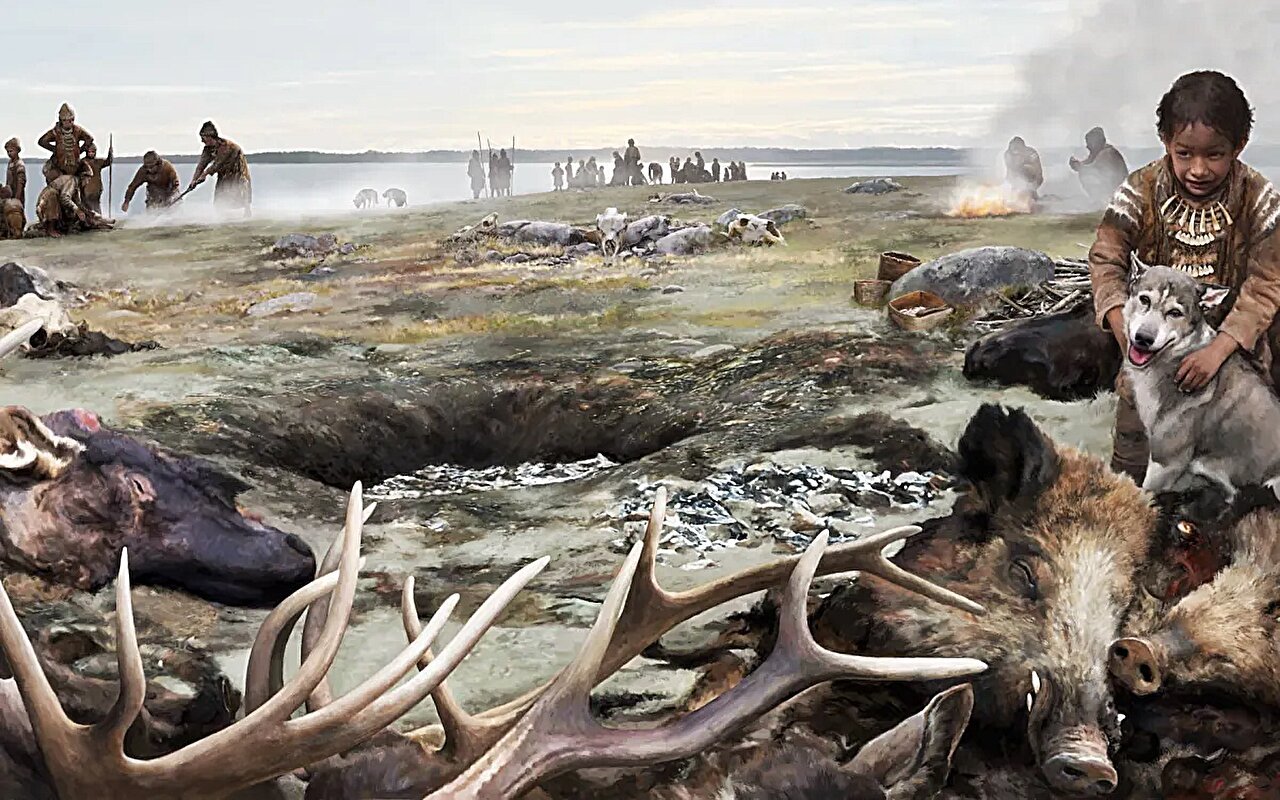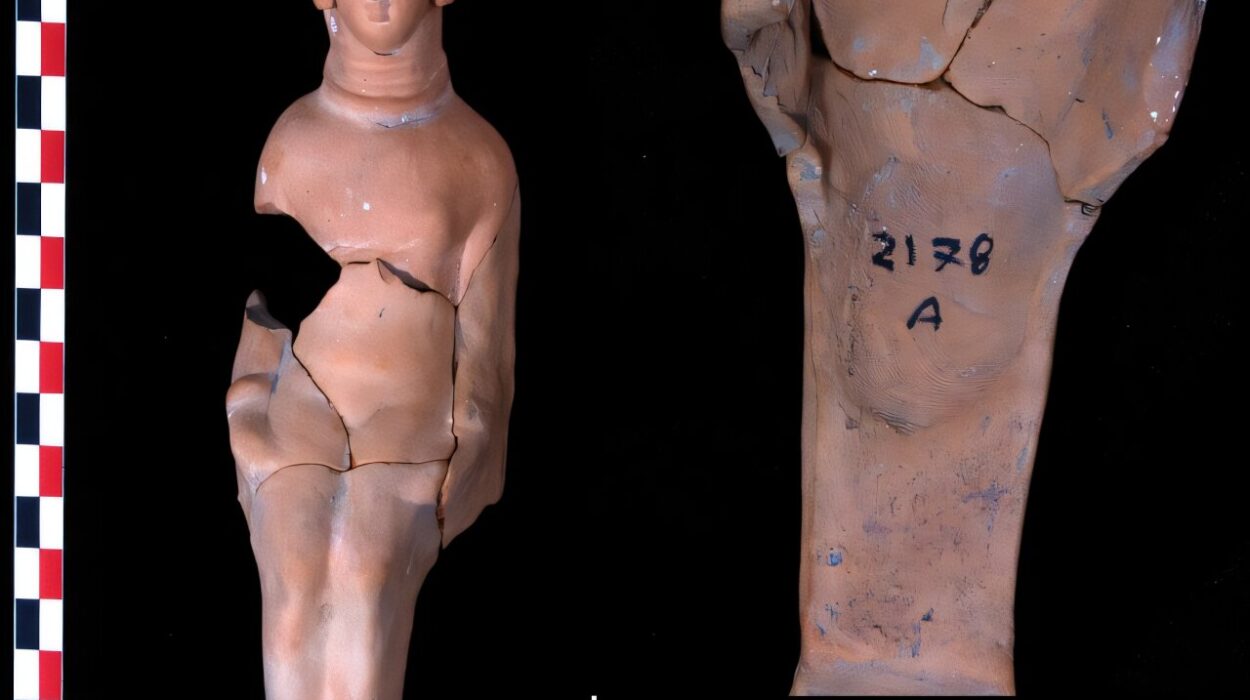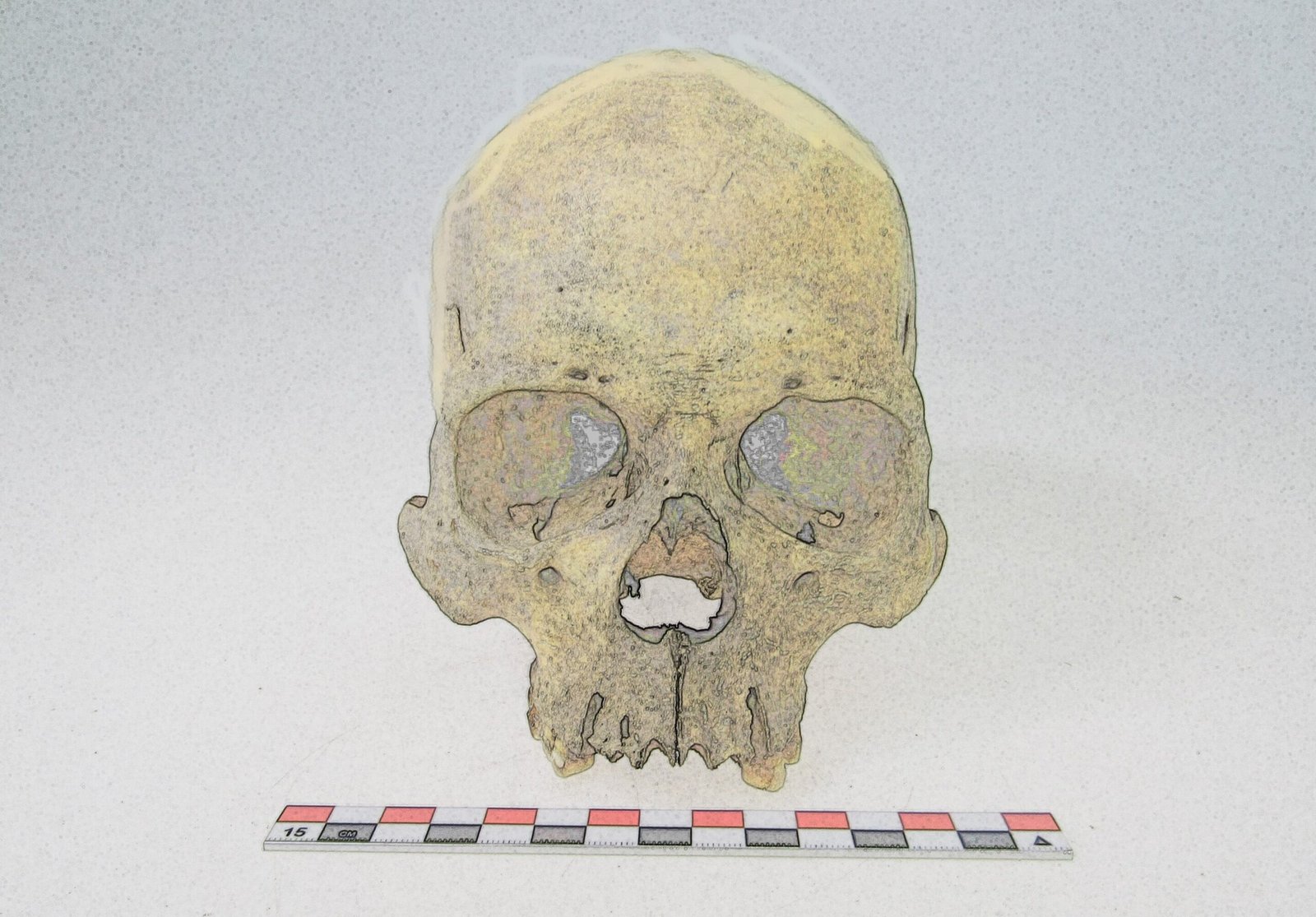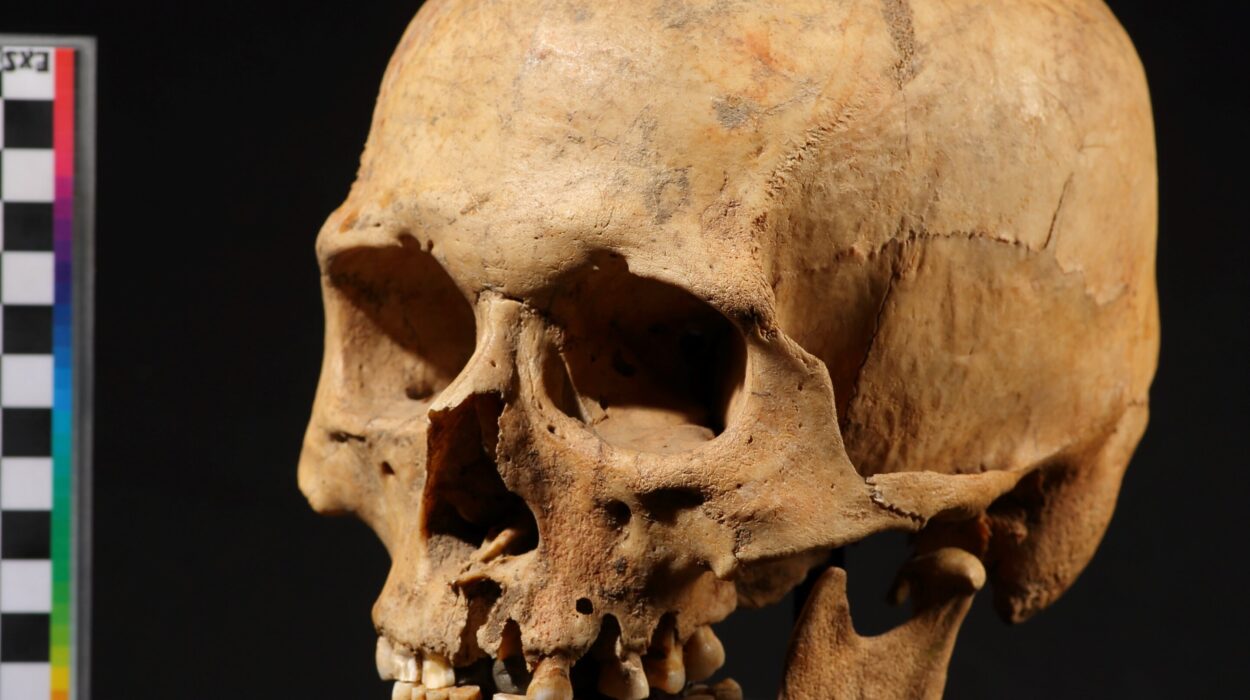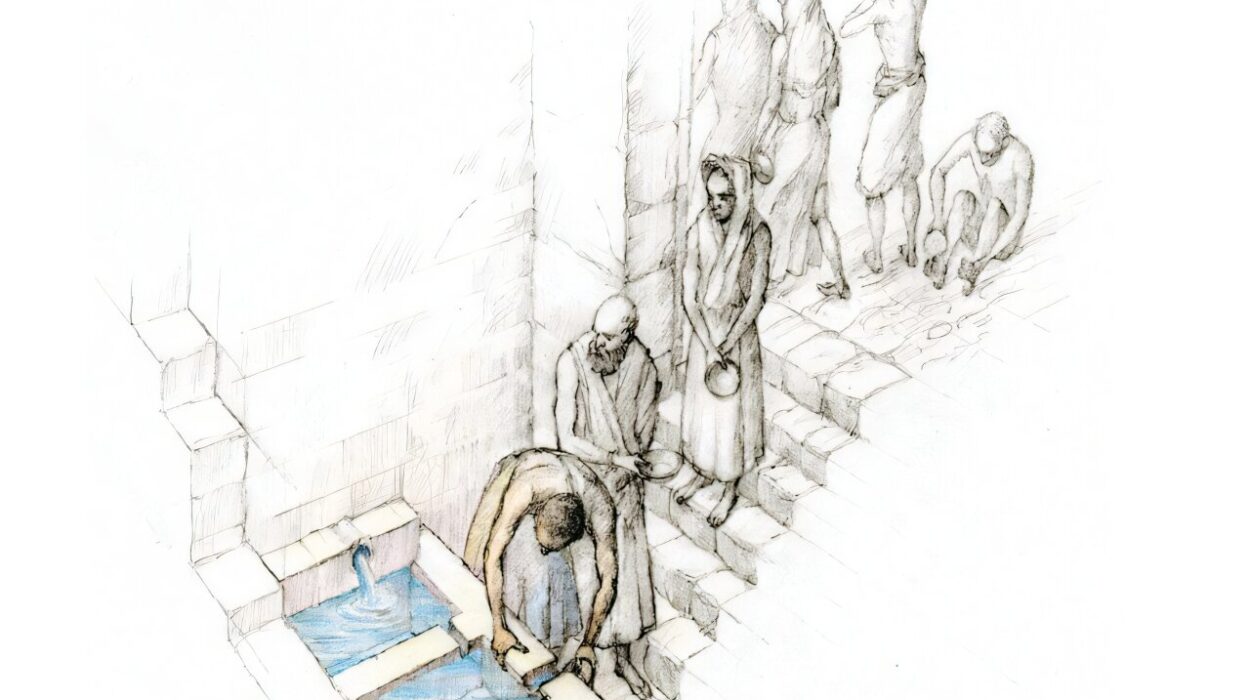In a remote cemetery on the banks of Lake Burtnieks in northeastern Latvia, the earth has guarded its secrets for thousands of years. Here, at the Zvejnieki burial site—occupied by hunter-gatherer communities between 7500 and 2500 BC—archaeologists have uncovered more than 2,000 animal teeth buried alongside human remains. They are not random leftovers of meals or trophies of the hunt. They are pendants—ritually placed, painstakingly prepared, once worn with care, now whispering across millennia.
For decades, these ornaments were admired for their symbolic power and artistry. But one vital question remained curiously unexplored: how were these teeth actually removed from the animals? A new study, led by archaeologist Dr. Aija Macāne, has finally unearthed the answer—not from ancient texts or inscriptions, but through fire, bone, and flesh.
The study, published in Archaeological and Anthropological Sciences, takes the unusual but powerful approach of experimental archaeology. It recreates the ancient processes step by step, using real animal heads, ancient tools, and time-honored techniques to simulate Stone Age life. The findings reveal a surprisingly complex, culturally rich practice—one that blended food preparation, tool-making, and ornament crafting into a single flow of daily life.
The First Cut
Imagine, for a moment, a hunter returning from the forest, carrying the carcass of a red deer or boar. The kill is not just sustenance. Every part of the animal will serve a purpose. The meat will nourish. The bones will become tools. And the teeth—gleaming ivory crescents—will be transformed into pendants, sewn into clothing, or strung as necklaces that chime with status, memory, or spiritual power.
But those teeth do not come free easily.
To explore just how prehistoric people extracted them, Dr. Macāne’s team tested seven different methods: from brute-force percussion to boiling, steaming, air-drying, soaking, and even controlled burning. Each method was evaluated for how easily it removed teeth, and whether it damaged them in the process.
What worked best was not the most violent or the most obvious. Instead, the most effective methods mirrored cooking techniques: wet cooking—like boiling or simmering—and pit steaming proved the most successful, loosening teeth gently without cracking them. Remarkably, these same methods also cooked the meat and preserved the bones—making the entire animal useful from snout to tail.
“Our experiments show that tooth extraction was a deliberate, time-sensitive process embedded in daily life, especially cooking practices,” said Dr. Macāne. “This challenges the assumption that teeth used for ornaments were simply scavenged or easily available.”
Teeth as Timelines
This study reframes tooth pendants not as mere afterthoughts but as objects with long biographies. Their story begins not in the grave, but in the hearth and the hunt. The animal is caught, butchered, prepared. Its teeth, too hard to carve easily from a cold skull, are steamed or simmered, coaxed free in the course of preparing meals. Only then do they begin their second life—as decoration, status marker, spiritual token.
The crafting of these pendants was not a sterile, workshop task. It was woven into the rhythms of domestic life. Preparing food meant preparing ornaments. The kitchen fire was not separate from the symbolic life of the people—it was central to it.
This realization forces archaeologists to rethink the chaîne opératoire, the sequence of technical and social steps involved in making artifacts. In the case of tooth pendants, that chain now begins far earlier than previously assumed, touching on hunting, cooking, carving, and even mortuary practice.
From Flesh to Flame to Grave
The Zvejnieki site is no ordinary cemetery. With over 300 burials across thousands of years, it offers an unusually detailed record of how prehistoric societies treated their dead—and how they expressed identity in death as in life. Many individuals were buried with elaborate ornaments, including headbands or necklaces made of animal teeth. Some had more than a hundred.
These were not mass-produced trinkets. Each tooth was individually extracted, cleaned, pierced, and strung. The effort involved speaks to the emotional and social value they carried. They were not just jewelry—they were stories, worn close to the skin.
Dr. Macāne’s work now adds a new layer to this narrative: that the process of making these ornaments began with the living body of an animal, in the heat of a cooking fire. This blurs the line between the practical and the spiritual. The act of tooth extraction was not separate from the act of living; it was a ritual of transformation, where sustenance became symbolism.
A Window into Lost Worlds
In revealing how prehistoric people extracted animal teeth, this study does more than solve a technical puzzle. It offers a glimpse into the interconnectedness of ancient life—how tasks we might see as distinct were in fact part of a single, flowing rhythm. Cooking, crafting, grieving, remembering: all were done by the same hands, often in the same place, perhaps even at the same time.
The implications ripple outward. Similar teeth have been found in archaeological sites across Europe, often in graves, often assumed to be scavenged or incidental. But now, researchers have reason to think otherwise. “By better understanding the extraction process, we gain deeper insight into the life histories of tooth pendants,” said Dr. Macāne. “From animal capture and processing, to ornament crafting, use, and final deposition.”
Future studies may compare these techniques to human and carnivore tooth extraction, or analyze cut marks and heating damage to reconstruct past behaviors with greater precision. The field of prehistoric ornament studies is being reimagined—less as a catalog of objects and more as a study of actions, relationships, and lived experience.
Teeth That Talk
To the untrained eye, an animal tooth in an ancient grave may seem like a primitive relic, a simple adornment from a distant past. But under the microscope of science—and the fire of human imagination—it becomes something more. A thread in a woven life. A relic of touch, taste, memory. A mark of identity worn in a world where survival and meaning were never separate.
What Dr. Macāne and her team have shown is that even in the Stone Age, humans were not just toolmakers or hunters or survivors. They were storytellers, using the materials of their world not just to live, but to say who they were.
And sometimes, they told those stories with teeth.
Reference: Aija Macāne et al, First stage in technological production of Stone Age animal teeth pendants: evidence from Zvejnieki (Latvia) and wider social implications, Archaeological and Anthropological Sciences (2025). DOI: 10.1007/s12520-025-02260-0
